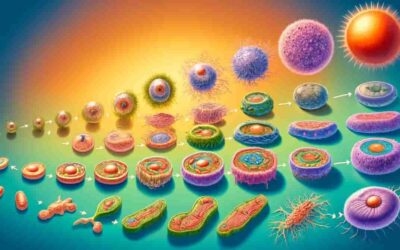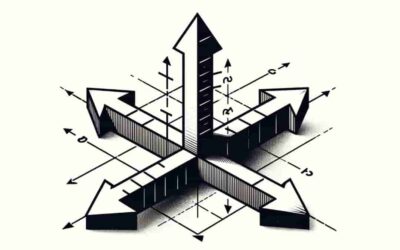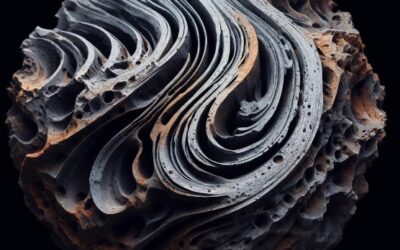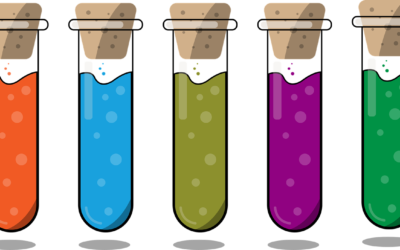A periodic table is a tabular arrangement of chemical elements organized by their atomic number, electron configuration, and recurring chemical properties. The periodic table is one of the most important tools in chemistry, and it is used by scientists and engineers in a wide variety of fields.
PERIODIC TABLE
Sandbh, CC BY-SA 4.0, via Wikimedia Commons
The periodic table is divided into rows called periods and columns called groups. The elements in a particular group have similar chemical properties, and the elements in a particular period have similar electronic configurations.
The periodic table is a powerful tool for predicting the properties of elements. For example, if you know the atomic number of an element, you can use the periodic table to predict its chemical reactivity, its physical properties, and its electron configuration.
The periodic table is also a valuable tool for understanding the periodic law, which states that the chemical properties of the elements repeat periodically as the atomic number increases. The periodic law helps us to understand why the elements have the properties that they do.
The periodic table was first created by Dmitri Mendeleev in 1869. Mendeleev’s periodic table was based on the atomic weights of the elements, and he was able to predict the existence of several elements that had not yet been discovered.
The periodic table has been modified several times since Mendeleev’s original table. The most recent change was in 2016 when the element oganesson was added to the table. Oganesson is the heaviest element known to exist, and it has an atomic number of 118.
The periodic table is a valuable tool for scientists and engineers, and it is an essential part of the study of chemistry. The periodic table is a powerful tool for predicting the properties of elements, and it helps us to understand the periodic law.
The periodic table is a tabular arrangement of chemical elements organized based on their atomic number, electron configuration, and recurring chemical properties. Here is an overview of the periodic table:
- Hydrogen (H)
- Helium (He)
- Lithium (Li)
- Beryllium (Be)
- Boron (B)
- Carbon (C)
- Nitrogen (N)
- Oxygen (O)
- Fluorine (F)
- Neon (Ne)
- Sodium (Na)
- Magnesium (Mg)
- Aluminum (Al)
- Silicon (Si)
- Phosphorus (P)
- Sulfur (S)
- Chlorine (Cl)
- Argon (Ar)
- Potassium (K)
- Calcium (Ca)
- Scandium (Sc)
- Titanium (Ti)
- Vanadium (V)
- Chromium (Cr)
- Manganese (Mn)
- Iron (Fe)
- Cobalt (Co)
- Nickel (Ni)
- Copper (Cu)
- Zinc (Zn)
- Gallium (Ga)
- Germanium (Ge)
- Arsenic (As)
- Selenium (Se)
- Bromine (Br)
- Krypton (Kr)
- Rubidium (Rb)
- Strontium (Sr)
- Yttrium (Y)
- Zirconium (Zr)
- Niobium (Nb)
- Molybdenum (Mo)
- Technetium (Tc)
- Ruthenium (Ru)
- Rhodium (Rh)
- Palladium (Pd)
- Silver (Ag)
- Cadmium (Cd)
- Indium (In)
- Tin (Sn)
- Antimony (Sb)
- Tellurium (Te)
- Iodine (I)
- Xenon (Xe)
- Cesium (Cs)
- Barium (Ba) 57-71. Lanthanides (Ce, Pr, Nd, Pm, Sm, Eu, Gd, Tb, Dy, Ho, Er, Tm, Yb, Lu)
- Hafnium (Hf)
- Tantalum (Ta)
- Tungsten (W)
- Rhenium (Re)
- Osmium (Os)
- Iridium (Ir)
- Platinum (Pt)
- Gold (Au)
- Mercury (Hg)
- Thallium (Tl)
- Lead (Pb)
- Bismuth (Bi)
- Polonium (Po)
- Astatine (At)
- Radon (Rn)
- Francium (Fr)
- Radium (Ra) 89-103. Actinides (Ac, Th, Pa, U, Np, Pu, Am, Cm, Bk, Cf, Es, Fm, Md, No, Lr)
- Rutherfordium (Rf)
- Dubnium (Db)
- Seaborgium (Sg)
- Bohrium (Bh)
- Hassium (Hs)
- Meitnerium (Mt)
- Darmstadtium (Ds)
- Roentgenium (Rg)
- Copernicium (Cn)
- Nihonium (Nh)
- Flerovium (Fl)
- Moscovium (Mc)
- Livermorium (Lv)
- Tennessine (Ts)
- Oganesson (Og)
Note that the periodic table includes both naturally occurring elements as well as synthetic elements that have been created in laboratories. Each element is represented by a unique symbol and is arranged in rows called periods and columns called groups or families. The elements within the same group share similar chemical properties.







0 Comments